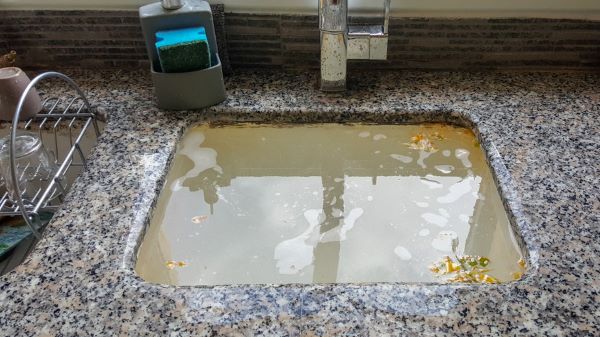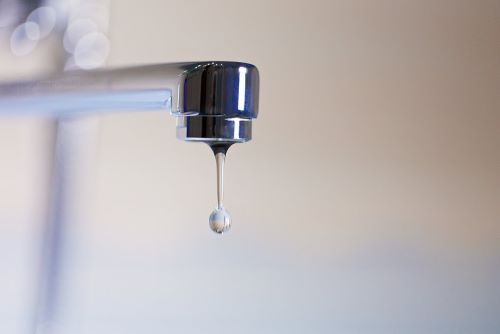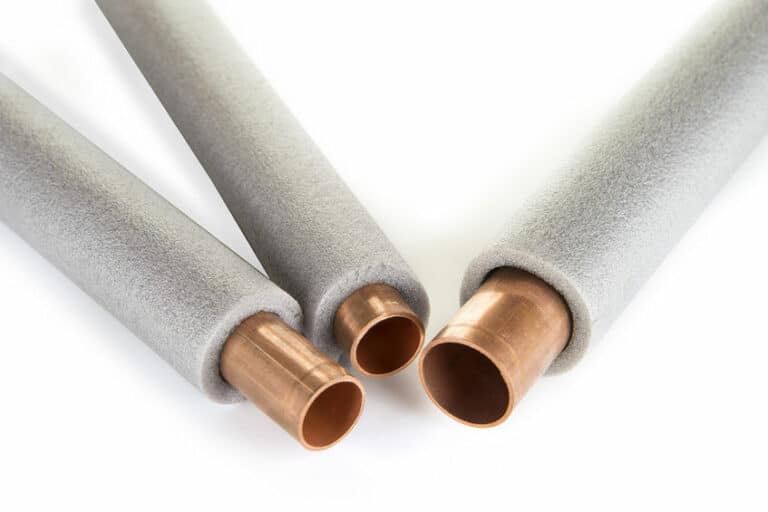As a homeowner, it’s important to have some basic knowledge of your plumbing system. Knowing how your home’s plumbing system works and where the essential components are located can be a lifesaver if a plumbing issue arises. In this post we’re going to go over some of the main components in a typical plumbing system, what to watch for concerning your plumbing system, and some useful tips and common fixes that all homeowners need to know.
1) Know the Location of Your Shutoff Valves
The most important shutoff valve in your home is your water main. Your home’s water main, or main water supply, is the point at which your water supply enters your home. Your water main will have a shutoff valve which allows you to completely shut off any water flow into your home. This is extremely valuable to know if you ever experience a major plumbing issue and need to cut off your water supply immediately. Shutting off your main water supply is also useful if you ever need to do a major repair to your home’s plumbing system.
Most water mains are located near the hot water heater. You will typically find your water main in your home’s basement or garage.
You will also notice that most of your home’s plumbing components, such as your toilets and sinks, have their own individual shutoff valves as well. These allow you to shut off the water supply at the specific source, such as a toilet, rather than shutting off the water supply for the entire home.
2) Learn How to Fix Clogged Drains
For our next plumbing tip, let’s get into a topic that all of us have experience with. Clogged drains. Clogged drains are the most common household plumbing problems for homeowners. And they can be a nuisance! Clogged drains that is, not homeowners 😉

There are a number of things that can cause a drain to get clogged. Culprits include:
- Food debris and grease building up in the kitchen sink drain
- Hair and soap scum building up in shower drain
- Hair, soap scum, and toothpaste building up in the bathroom sink drain
When it comes to cleaning out and unclogging a drain, try not to use harsh liquid drain cleaners. I know this probably goes against everything you’ve heard and seen before. But, trust me. Instead, try a plunger first. If the plunger doesn’t do the job, opt for a drain snake. A drain snake should allow you to locate and pull out whatever is clogging the drain.
If you can’t seem to fix your clogged drain yourself, give your local plumber a call. They should be able to get your drains working properly in no time.
Last of all, in order to prevent future drain problems, do your best not to allow anything down the drain that isn’t supposed to go down the drain. This would include everything except for water and soap. There are drain covers you can use that will help keep food, hair, and other debris from entering your drains.
3) Keep an Eye Out for Water Leaks
What if I told you that the average household’s water leaks can account for nearly 10,000 gallons of water wasted every year and ten percent of homes have leaks that waste at least 90 gallons of water per day? Well it’s true! Think about how much money that would add up to on your water bill! Not to mention the mold water leaks can cause and the damage to your home’s surfaces as well.
As you can see, it’s important to spot water leaks as soon as possible. Many leaks will be obvious and easy to spot in plain sight. But, as most homeowners know, there can be damaging water leaks that aren’t noticed until it’s too late. So, to avoid high water bills and damage to your home, be sure to inspect areas that aren’t typically viewed with everyday activity. These areas can include:
- Under sinks
- Behind toilets
- Around your dishwasher
- Under or behind your washing machine
- Any other components that have a water line connected to them
- Any other areas with exposed water lines
And please be aware; a dripping faucet or showerhead is not normal. It’s a sign that you have a water leak! These types of leaks are usually easy fixes. A simple search online should provide you with the solution you need.

How to Test for Leaks
There is a simple test you can do to check your plumbing system for water leaks.
To check your overall plumbing system, check your water meter and don’t use any water for at least 2 hours. After 2 hours, recheck your water meter. if the meter has changed, it’s likely that you have a water leak somewhere.
4) Use Your Toilets Properly
Toilets are made to dispose of waste and toilet paper. That’s it. They aren’t meant to dispose of paper towels, floss, plastic, or any other forms of debris. So, we recommend only allowing waste and toilet paper into your toilet bowl. This will help keep your pipes from getting backed up and keep your toilet flushing properly.
Another tip is to be mindful of how much toilet paper you are putting into your toilet bowl during a sitting (literally). Most of us like to use thicker, more comfortable toilet paper. The problem is that thicker toilet paper doesn’t break up as easily in water as compared to thin toilet paper. Thus, thicker toilet paper can cause blockage in the pipes if too much is flushed down the toilet at once.
To prevent blockage (and having to pull out the plunger), flush the toilet a few different times while you are using the toilet. By flushing numerous times in one sitting, you are breaking up the load into smaller spaced-out loads. This should prevent your toilet from getting stopped up or clogged.
Toilet Constantly Running?
If your toilet seems to be constantly running, then it likely has a water leak and a component needs a repair. To check your toilet for leaks, drop some food coloring into your toilet tank (not the bowl). Wait 10-20 minutes at least. Then, check the toilet bowl. If there is any food coloring inside the bowl, you have a leak in your toilet. After running this experiment, go ahead and flush the toilet to remove the food coloring.
By researching online, you should be able to determine which component in your toilet is causing the issue. Then, you can purchase the part and fix it yourself. You will likely need to research the repair steps online as well. If you don’t feel comfortable doing this yourself, give your local plumber a call.
5) Take Care of Your Water Heater
In most homes, hot water is a necessity. I mean, who likes cold showers? Not to mention all of the other uses for hot water in a typical home (washing clothes, dishes, etc.). For this reason, it’s important to take care of and keep an eye on your hot water heater.
Keep an eye out for water leaks on or around the bottom of your water heater and also the pipes. Also be aware of any weird noises that seem to be coming from the inside of your water heater. These signs are red flags that something isn’t right and it needs to be fixed.
If you have a traditional tank water heater and you’d like to go the extra mile, consider having your water heater serviced once a year or so. Many HVAC companies and plumbers provide this service for a reasonable price. The service will typically include an inspection of the water heater along with draining and replacing the water inside the tank. Sediment and other debris can build up in the tank over a prolonged period of time, so it’s a good idea to have the tank flushed regularly.
6) Insulate Exposed Pipes
For our last plumbing tip we’re going to cover a wise preventive maintenance solution that will help keep your pipes from freezing. Frozen pipes can cause serious damage, so it’s a good idea to take the precautions to prevent your pipes from freezing. This step only applies to those who live in climates where the temperature reaches freezing (32 degrees F).
Insulate any water lines that are exposed to the outdoor elements, are near exterior walls, or that are in an area of the house that doesn’t get adequate heat (basement, attic, garage, etc.). This can be done by using pipe wrap or sleeves made out of foam, rubber or fiberglass. You can also implement electrical heat tape. You can usually find these cold weather protection products at your local hardware or plumbing store.

If you are going away in the cooler months and are leaving your home vacant, it’s important to winterize your home before you leave. This would include turning off your main water supply, opening up all your water lines, and leaving your thermostat ON at an adequate temperature (55 degrees F). This will help prevent any pipes freezing while you are away.
We Hope These Plumbing Tips Help You!
We’ve gone over some of the most important plumbing tips that any new or experienced homeowner should know. If you follow these tips, you should be well prepared for most of the plumbing issues you might face. Whether you need to shut off water flow to your whole home or to a single component, now you know how. You know how to fix and prevent clogged drains, find and repair water leaks, and take care of your toilet and water heater. You even know how to prevent frozen pipes whether you are home or away!
Feel free to share any comments or questions you might have! Think there should be a tip added to the list? Leave it in the comments below!
Cagle Service Heating and Air is a HVAC service company located in Jackson TN. If you live in the Jackson TN area and are in need of a plumber, give us a call at 731-300-1030!

